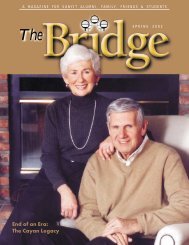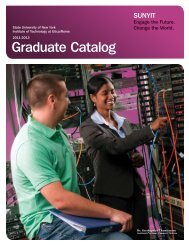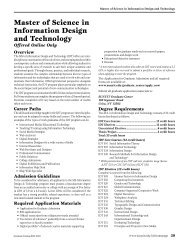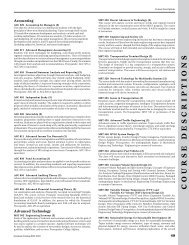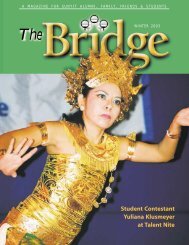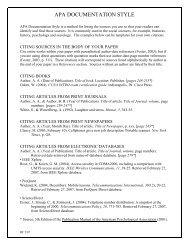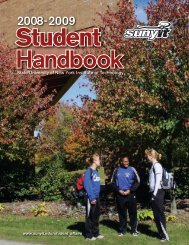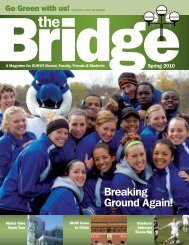Expanding the Public Sphere through Computer ... - ResearchGate
Expanding the Public Sphere through Computer ... - ResearchGate
Expanding the Public Sphere through Computer ... - ResearchGate
Create successful ePaper yourself
Turn your PDF publications into a flip-book with our unique Google optimized e-Paper software.
CHAPTER 3. TECHNOLOGY & THE PUBLIC SPHERE 49<br />
it goes: individuals can enter or leave <strong>the</strong> “discussion” at any time, responding<br />
to both recent and not-so-recent messages, starting new threads in <strong>the</strong> discussion.<br />
In this example, <strong>the</strong> size of <strong>the</strong> discussion would be limited by <strong>the</strong> physical dimensions<br />
of <strong>the</strong> bulletin board and <strong>the</strong> participants would be limited to those who<br />
physically happened by <strong>the</strong> board. The computerized version is very similar, with<br />
<strong>the</strong> “physical” location of <strong>the</strong> board replaced by one or many physical locations<br />
in a network of computers who are connected to each o<strong>the</strong>r, and <strong>the</strong> “physical”<br />
location of <strong>the</strong> participants replaced by <strong>the</strong>ir presence on a computer that can access<br />
<strong>the</strong> board. The size of <strong>the</strong> discussion is limited by <strong>the</strong> much-less constraining<br />
limitations of <strong>the</strong> network, and <strong>the</strong> participants are limited to <strong>the</strong> much-less constraining<br />
limitations of <strong>the</strong> number of network users.<br />
Although <strong>the</strong> use of computers for discussion is a relatively recent phenomenon,<br />
scholars have begun systematic investigations of its characteristics. Some have<br />
examined <strong>the</strong> relationship between access to information and <strong>the</strong> distribution of<br />
power in society, suggesting that computer- mediated discussion could ease differential<br />
access, distribute power more broadly and thus lead to greater democratization<br />
(Stallabrass 1995, Jacobson 1993, Stallabrass 1995). O<strong>the</strong>rs, mostly concerned<br />
with educational applications, have noted <strong>the</strong> potential to foster creativity<br />
and cooperation among participants while recognizing <strong>the</strong> limitations of electronic<br />
space (Perrone, Repenning, Spencer & Ambach 1996, Acker 1995, McCormick &<br />
McCormick 1992, Kiesler, Seigel & McGuire 1984). The absence of social cues to<br />
status and gender have raised issues concerning <strong>the</strong> possibilities of creating more<br />
democratic communication (Savicki, Lingenfelter & Kelley 1996, Herring 1993).<br />
The relationship between engaging in computer mediated discussion and o<strong>the</strong>r<br />
forms of participation have been examined by (Fisher, Margolis & Resnick 1994).<br />
Linguistic models of communication provide a framework for distinguishing various<br />
forms of computer mediated discussion. The fundamental model of linguistic<br />
communication, what Shank (1993) described as <strong>the</strong> “paragon of language-inuse”<br />
is <strong>the</strong> conversation (Fiske 1982, Saussure 1959, Schegloff 1972). A conversation<br />
is characterizable by its organization and activities (Levinson 1983, Murray<br />
1991). Three general types of conversations have been identified: <strong>the</strong> monologue,<br />
<strong>the</strong> dialogue and <strong>the</strong> discussion (Shank 1993, Levinson 1983, Winograd<br />
& Flores 1986). A monologue involves one message sender and multiple, passive<br />
receivers. A dialogue involves two participants taking turns and exchanging roles<br />
as sender and receiver. A discussion involves a single person who starts as <strong>the</strong><br />
sender and retains control of <strong>the</strong> conversation, with multiple receivers, some of<br />
whom rotate (with <strong>the</strong> initiator) <strong>the</strong> role of <strong>the</strong> sender. While computer mediated



